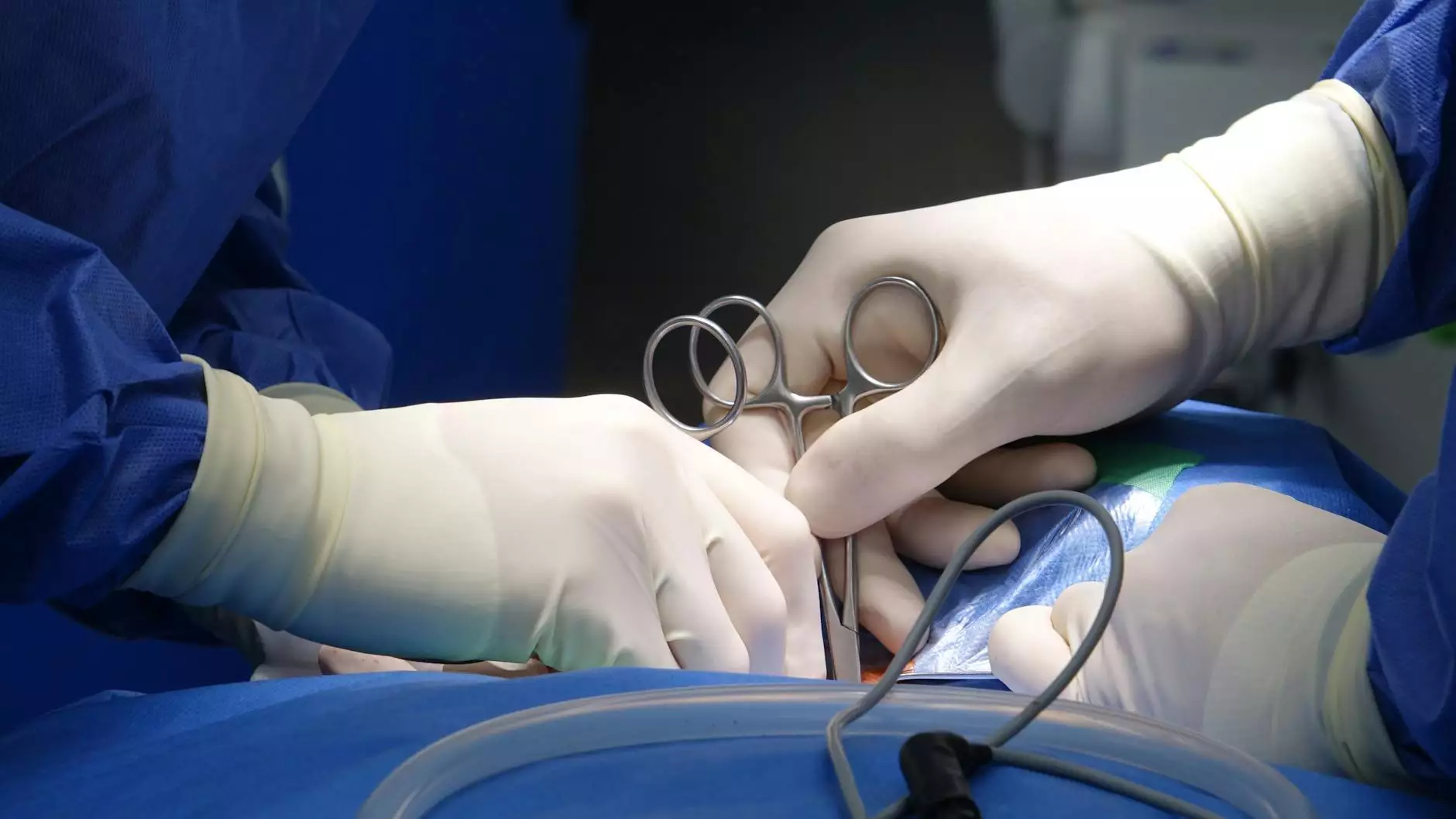In-Depth Insights into Risk Reducing Salpingo-Oophorectomy: A Pathway to Preventive Health for Women

In the journey towards optimal women's health, especially for those with a high genetic or familial risk of ovarian and breast cancers, risk reducing salpingo-oophorectomy has emerged as a powerful preventative surgical intervention. This comprehensive guide aims to elucidate every facet of this procedure, from its medical rationale and benefits to potential risks and post-operative considerations, empowering women to make informed health choices.
Understanding Risk Reducing Salpingo-Oophorectomy: A Critical Preventive Strategy
What is Risk Reducing Salpingo-Oophorectomy?
Risk reducing salpingo-oophorectomy is a specialized surgical procedure involving the removal of both fallopian tubes (salpingo) and ovaries (oophorectomy) to substantially decrease the risk of ovarian and fallopian tube cancers, and in some cases, breast cancer. It is particularly advised for women carrying high-risk genetic mutations, such as BRCA1 and BRCA2 gene mutations, or those with a strong family history of these cancers.
Why Consider This Procedure?
- Significantly reduces the risk of developing ovarian and fallopian tube cancers—cancers often diagnosed at an advanced stage due to subtle early symptoms.
- Potential decrease in breast cancer risk, especially in women with genetic predispositions.
- Serves as a proactive, preventive health measure that aligns with personalized medicine approaches.
- Enhanced peace of mind for women at elevated genetic risk, leading to improved quality of life.
Medical Rationale Behind Risk Reducing Salpingo-Oophorectomy
Genetic and Epidemiological Foundations
The vast majority of ovarian cancers are diagnosed at an advanced stage, often resulting in poor prognoses. Research indicates that BRCA1 and BRCA2 mutations sharply increase the lifetime risk of ovarian, fallopian tube, and breast cancers. In women with these mutations, the lifetime risk of ovarian cancer can be as high as 40-60%, markedly higher than the general population risk (~1.3%).
Understanding this risk, medical professionals recommend risk reducing salpingo-oophorectomy as a preventive strategy that substantially cuts down the probability of developing these cancers. Studies have shown that this procedure can reduce ovarian cancer risk by approximately 80-90% in high-risk women.
Pathophysiology and Cancer Origin Theories
Recent scientific evidence suggests that many high-grade serous ovarian cancers originate from the fallopian tubes. This paradigm shift underscores why salpingo-oophorectomy—removing both the ovaries and the fallopian tubes—is an effective preventative measure.
Indications for Risk Reducing Salpingo-Oophorectomy
This procedure is primarily indicated for women who:
- Carry confirmed BRCA1 or BRCA2 mutations.
- Have a strong family history of ovarian or breast cancers.
- Are age-appropriate, typically recommended between ages 35-45 or after completion of childbearing, depending on individual risk factors.
- Have other genetic syndromes associated with ovarian or gynecological cancers, such as Lynch syndrome.
The Surgical Procedure: Step-by-Step Overview
Preoperative Preparation
Patients undergo thorough genetic counseling and screening before surgery. Imaging studies, blood tests, and psychological assessments are essential components of preoperative planning.
Conducting the Surgery
The procedure can be performed via minimally invasive laparoscopic techniques or, in certain cases, through open abdominal surgery. The general steps include:
- Anesthesia administration and patient positioning.
- Creation of small incisions in the abdomen for laparoscopic instruments.
- Identification and careful dissection of the fallopian tubes and ovaries.
- Complete removal of fallopian tubes (bilateral salpingectomy) and ovaries (bilateral oophorectomy).
- Inspection for any additional abnormalities or signs of disease.
- Secure closure of incisions and postoperative recovery planning.
Postoperative Care and Follow-Up
Post-surgical recovery involves pain management, activity restrictions, and hormonal management if ovaries are removed before natural menopause. Ongoing surveillance and genetic counseling support are crucial to address long-term health goals.
Benefits of Risk Reducing Salpingo-Oophorectomy
Major Advantages
- Prevention of ovarian and fallopian tube cancers—most effective preventive measure for high-risk women.
- Potential reduction in breast cancer risk, especially when performed before menopause.
- Elimination of ovarian cancer symptoms and associated health concerns.
- Offers psychological relief and peace of mind for women concerned about hereditary cancer risks.
Additional Health Benefits
The removal of ovaries results in a significant decrease in circulating estrogen levels, which may influence other health parameters, including reduced risk of hormone-related cancers and certain cardiovascular benefits. However, it also necessitates consideration of menopausal symptoms and their management.
Risks and Considerations of Risk Reducing Salpingo-Oophorectomy
Potential Surgical Risks
- Bleeding, infection, or injury to surrounding organs during surgery.
- Risks associated with anesthesia.
Long-term Health Implications
- Immediate menopause if ovaries are removed before natural menopause, leading to hot flashes, vaginal dryness, and osteoporosis risk.
- Need for hormone replacement therapy (HRT) in premenopausal women to mitigate hormonal deficiency effects.
- Possible increased risk of cardiovascular disease post-menopause if hormonal levels are not managed properly.
Psychological and Emotional Considerations
The diagnosis of increased cancer risk and the decision to undergo preventive surgery can be emotionally taxing. Support from mental health professionals and support groups can be vital in this context.
Making an Informed Decision: Consultation with Specialists
Women contemplating risk reducing salpingo-oophorectomy should engage in comprehensive discussions with experienced obstetricians & gynecologists, genetic counselors, and other healthcare professionals. This collaborative approach ensures personalized risk assessment, timing, and management strategies that align with individual reproductive desires and health goals.
Why Choose Dr. Seckin for Your Preventive Gynecological Care?
At drseckin.com, our team of highly trained Obstetricians & Gynecologists specializes in advanced, minimally invasive procedures including risk reducing salpingo-oophorectomy. We prioritize patient-centered care, ensuring thorough counseling, precision surgical techniques, and compassionate post-operative support. Our clinic is dedicated to empowering women with knowledge and options for a healthier future.
Summary: Taking Control of Your Health with Risk Reducing Salpingo-Oophorectomy
Choosing to undergo risk reducing salpingo-oophorectomy is a significant step toward proactive cancer prevention, especially for women with hereditary risk factors. It offers a potent chance to reduce the likelihood of ovarian and fallopian tube cancers, potentially lowering breast cancer risk and improving overall health outcomes. While contemplating this option involves careful consideration of risks and benefits, expert guidance and personalized care can make this decision a positive step toward long-term wellness.
Contact Our Specialists Today
If you are at high genetic risk for ovarian or breast cancer and wish to explore preventive options, including risk reducing salpingo-oophorectomy, contact us at drseckin.com or call our clinic to schedule a consultation. Our team is committed to providing expert guidance, safe surgical care, and ongoing support to help you take control of your health journey.
risk reducing salpingo oophorectomy








